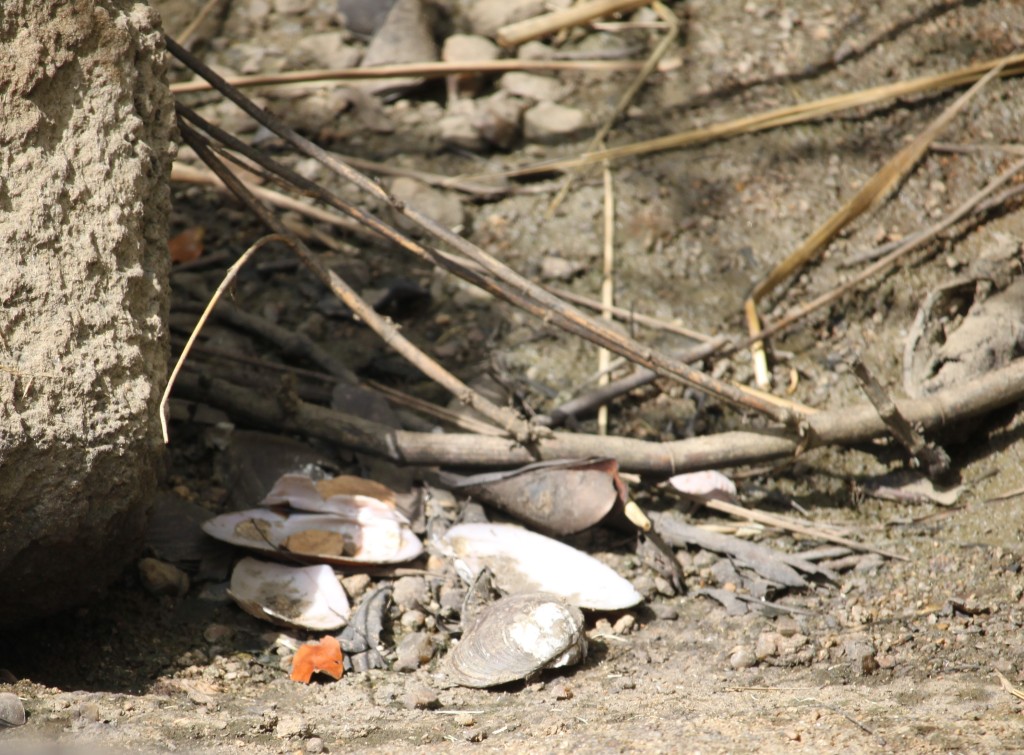For enriching body and mind, I can’t imagine there are many places better than the banks of the Zambezi River. It’s a place of which I will never tire. The view from our upstairs bedroom looking out on to the river is supreme. It simply can’t be bettered.
And the hippo who puts his eyes and nose up above the water right in front of us, just moments after we arrive, is a very welcome sight. He spends his whole day there. He will disappear under the water for a few minutes and then moments later, reappear in almost the same place. Sometimes he seems to catch sight of us watching him, other times his eyes are closed as he blissfully dozes in the late April sun. Later in the season the colder water temperature may drive him out to warm up on dry land, as it did with the hippo I watched here last July.

Meanwhile on the opposite bank, a trio of hippo emerges to graze on such tufts of green grass as they can find. The smallest member of the group is about half the size of the largest. The largest is enormous and really quite pink. The hippo are silent as they move between bushes and trees, intent on eating. They hardly ever lift their heads. Then at some sign – perhaps of full bellies – they slip quietly back into the water with as little fuss as they arrived.
There is a certain kind of silence here filled mostly with insect noise. Humans are audible from time to time, as are the noises of an occasional boat but mostly the sounds are from nature. The crickets and katydids seem to sing from dusk till dawn, but sometime in the very early hours of the still dark morning, if I am awake, I will be aware only of silence as they too rest from their vocalising. As to larger beasts, the hippo are the most audible of these. At night especially, their snorts and guffaws float across the river to us then drift on by, like the river itself.

In the day time, on a sandbank on the other side of the river, we watch as flocks of Spurwing Geese arrive and in such vast numbers as I have never seen before. Viewed a bit more closely some appear to be simply resting, others rooting about. They are handsome birds with their black and white feathers, their red beaks and legs. And large, some weighing as much as 7kg. Which makes it all the more amazing to me that their highest recorded flying speed is 14okm per hour. I understand that some populations of Spurwing Geese would be poisonous if one was to eat them, for their diet consists of poisonous beetles. Watching these geese on the Zambezi, their calls and squawks are almost continuous. They arrive in the early morning in different-sized groups, and depart at dusk, in the same way. We make an estimated count of over 300 birds. I wonder where they head to at night.

The bird traffic at dusk is always intriguing; some flocks heading in one direction, others flying the opposite way as they head to their various roosting places. We are even treated to a small group of Great White Pelicans who pass overhead as we sit on a pontoon on the water at sundown. They appear from beyond the tree line behind us and head off downstream. The fading sunlight catches their feathers, tingeing them with orange.
The mbira is a traditional musical instrument played in Zimbabwe and other countries in Africa. Here the artist Tinashe plays and sings “Zambezi.”


